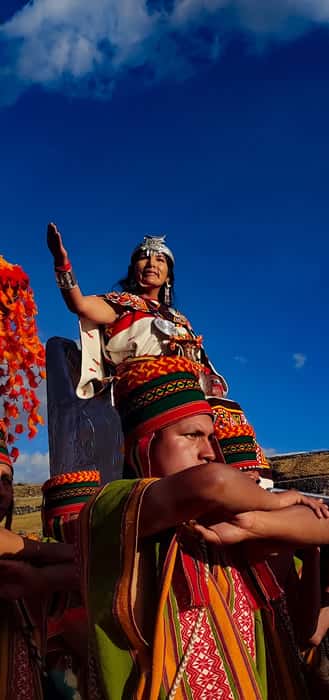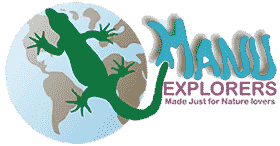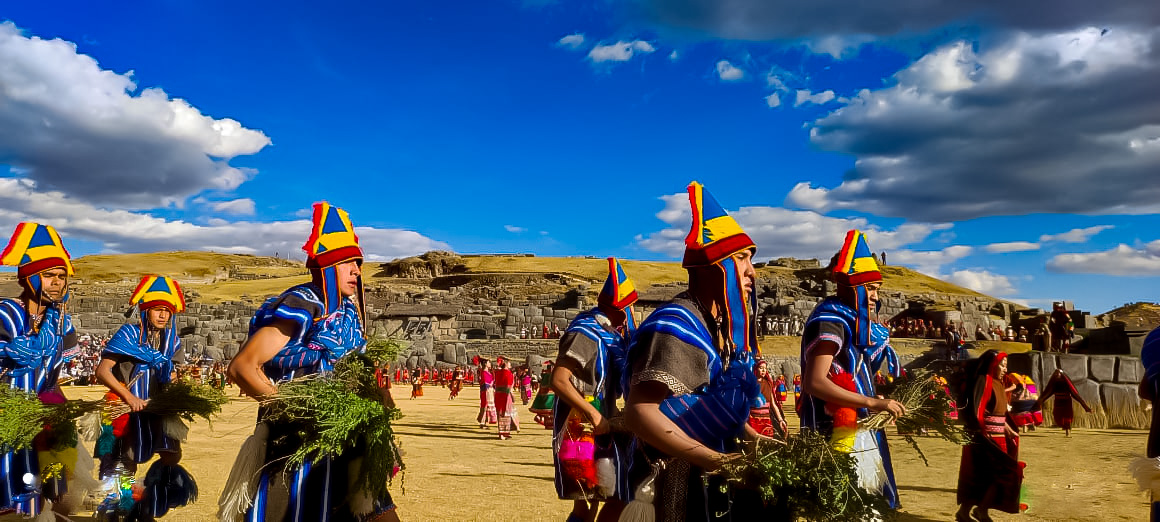Brief Description about the Inti Raymi
At the time of the Incas, this ceremony was held in the Huacaypata square (today Plaza Mayor of Cusco) with the attendance of the entire population of the city, approximately one hundred thousand people. The curacas (who visited Cusco for the Inti Raymi), because they were not of royal blood, were placed in another square attached to the main one called Cusipata, (while the orejones, Inca nobles of royal blood, were in the Huacaypata square, and were only invited for short periods of time to some curacas to drink the chicha) (Garcilaso). The winter solstice is the shortest day and the longest night of the year. During the Inca period, this fact was of fundamental importance, since it was the starting point of the new year, which was associated with the origins of the Inca ethnic group itself. Garcilaso de la Vega tells us that this was the main celebration and it was attended by the curacas, lords of vassals, from all over the empire with their greatest finery and inventions. Therefore, it was also a festivity with a high political content because it legitimized the subjection of the subjugated peoples to the Inca state. Thus, the representatives of the conquered peoples reiterated their loyalty to the emperor. The preparation for the festivity was strict, for in the previous three days they ate only a little white corn, raw, and a few herbs called chúcam and pure water. In all this time they did not light fires in the whole city and they abstained from sleeping with their wives. For the ceremony itself, the virgins of the Sun prepared some corn muffins. On that day, the sovereign and his relatives waited barefoot for the sunrise in the plaza. Squatting down, with open arms and kissing the air, they received the sun. Then the Inca, with two wooden glasses (the wooden keros are later to the conquest, in the toast they used the aquillas all of gold and silver). ...he took two large golden glasses that they call Aquilla, filled with the concoction that they drink. Garcilaso de la Vega says "the kero was made of wood, not gold, they assimilated this ceremonial vessel from the Tiahuanaco culture", he toasted the chicha de Jora: from the vessel he held in his left hand his relatives drank; the one on the right was poured and poured into a golden jar. Then they all went to the Coricancha and worshipped the sun. The curacas delivered the offerings that they had brought from their lands and then the procession returned to the square, where the massive sacrifice of the cattle was carried out before the new fire that was lit using the gold bracelet of the main priest as a mirror. The meat of the animals was distributed among all those present, as well as a large quantity of chicha, with which the festivities continued during the following days until the end of the festivity.
The Inca Pachacutec, who is credited with the construction of the citadel of Machu Picchu, established this celebration during his reign around 1430. Although it was later banned by Viceroy Francisco de Toledo, who considered it a pagan celebration, the Festival of the Sun was restored and revalued in 1944 thanks to the work of Peruvian writer Francisco Espinoza Navarro, who was in charge of writing, directing and representing the reconstruction of this Inca celebration.
Nowadays, to commemorate this festivity, every year, large groups of people dress up in Inca garments to recreate this majestic celebration of the Tahuantinsuyo in honor of the Sun God.
Inti Raymi (festival of the sun) is a ceremony held in honor of Inti (the sun god), which takes place every June 24 at the winter solstice, in which the inhabitants of the Andean countries, with the presence of domestic and foreign visitors, continue to perform this tradition, now considered a ceremony of tourist interest. Being an Inca tradition, the Inti Raymi remains as a rite for many other indigenous communities of Inca legacy, some of which are settled in other parts of the ancient Inca territory, such as Peru, Ecuador, Bolivia, Argentina, Colombia and Chile.
Where is it celebrated?
During the Inca Empire, the Inti Raymi was the most important of the four ceremonies celebrated in Cusco, according to the Inca Garcilaso de la Vega. The celebration took place in the Haukaypata or Main Square of the city.
The ceremony normally begins at 9am in the Qorikancha (temple of the Sun), at 10:30 a.m. a ceremony is held in the Plaza de Hawqaypata/Plaza de Armas of Cusco.
The main ceremony takes place in the Sacsayhuaman Archaeological Complex, the ceremony begins at 13:45 hours.
Inti Raimy Map
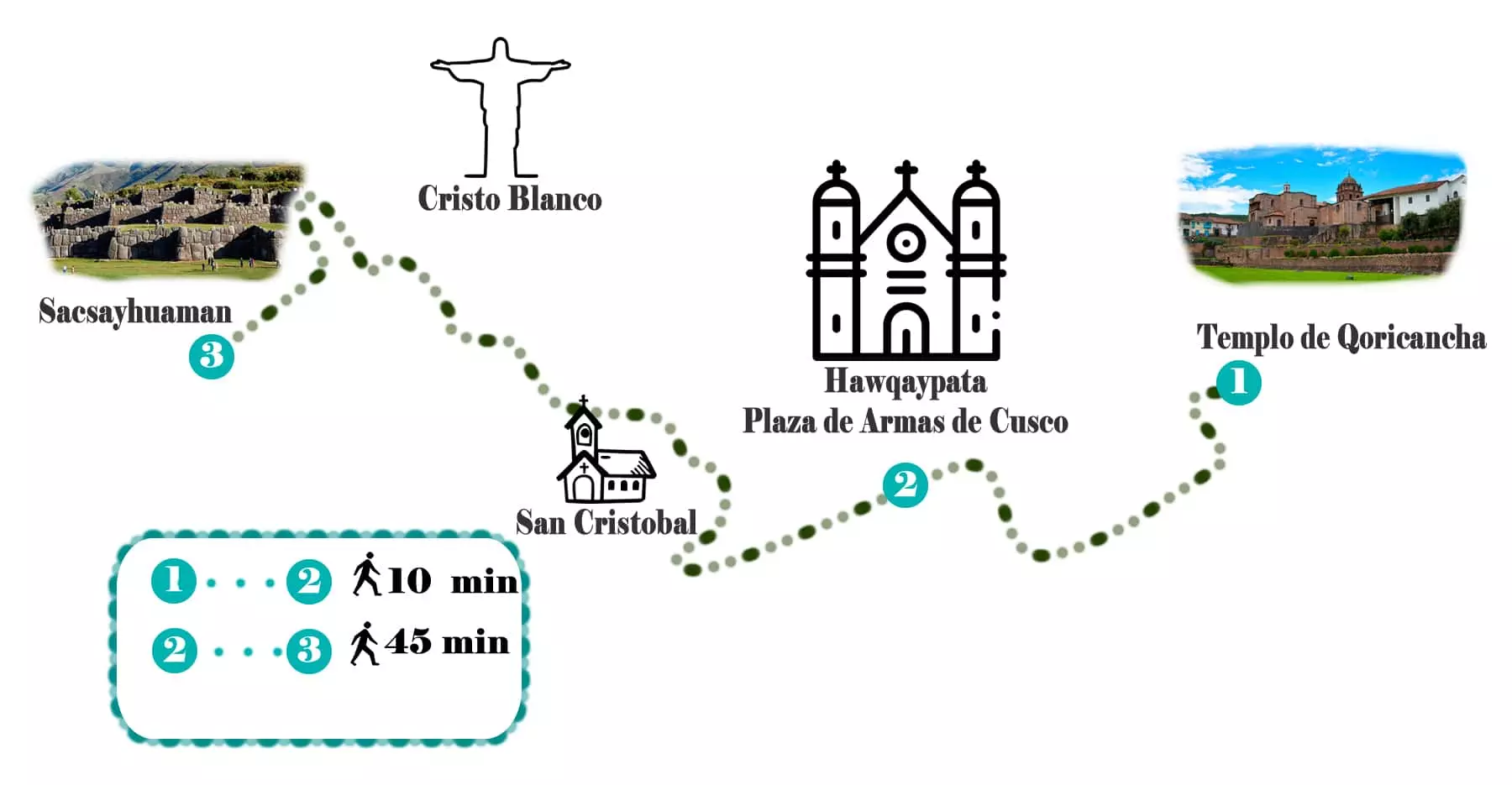
Inti Raimy Ticket type seccion
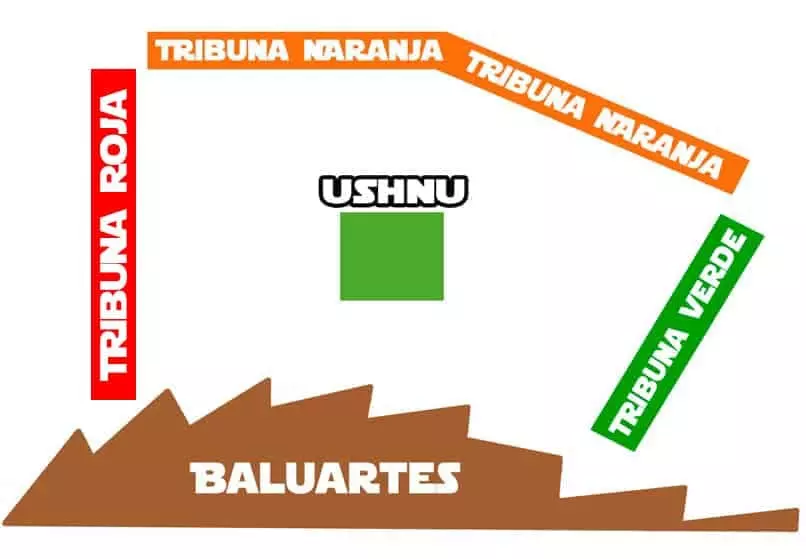
The Inca in the Inti Raymi

The Coya - Incas Wife
